Creating A Bookable Service
In today’s fast-paced digital age, the concept of bookable services has revolutionized the way businesses offering time-based services operate, enhancing customer convenience and streamlining the booking process. This innovation empowers businesses in various industries, particularly those offering time-sensitive services such as photography, to cater to their customers’ needs more efficiently.
Imagine the possibility of enabling a customer seeking a professional photoshoot for their special event to effortlessly reserve the exact date and duration for your services that suits their requirements, eliminating the cumbersome back-and-forth communication typically associated with appointment scheduling. You would have enhanced the customer experience by offering a seamless and convenient booking process.
This guide explores, comprehensively, the features accessible to vendors for the creation and management of bookings. To create a bookable product, follow the steps below

- Start by logging into your Maker Market account.
- Once you’re logged in, navigate to the vendor dashboard.
- In the vendor dashboard, you’ll see a menu on the left. Click on “Booking.”
- You’ll find the “Add New Booking Products” button located in the top right corner. Click on it.
- A new window will be opened, allowing you to input all the necessary details for your new product.
- Fill in the basic details of your service in the first section, which include its title, category and images.
- Tick the Virtual checkbox, as your product (service) does not require shipping.
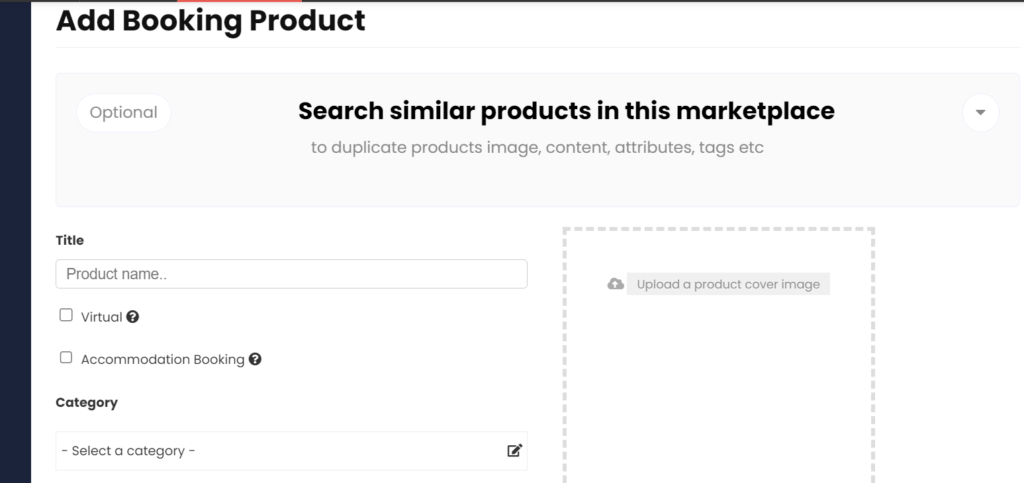
Booking Duration
This parameter sets the duration of a booking, and it offers flexibility in two ways. You can either establish a fixed block of time, or you can grant customers the freedom to choose the length of the service period they need during the booking process, which they can specify on the booking page. The units for defining duration can be in Hours, Minutes, Days, or Months.
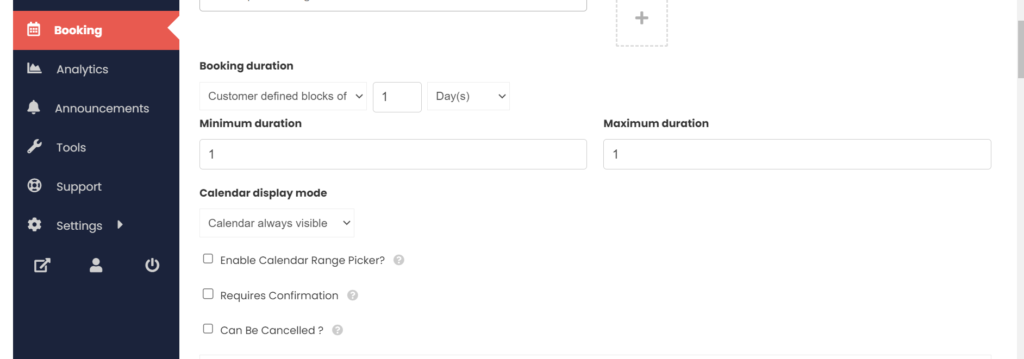
Fixed Blocks
Fixed blocks represent predefined durations that you, as the service provider, establish. In this model, customers have the option to select one fixed block, which will last for the specific amount of time you have set. For instance, if your services are offered on an hourly basis, a customer can reserve only one-hour photography session at a time.
Customer-Defined Blocks
Customer-defined blocks are characterized by a predetermined duration, but customers retain the flexibility to choose the number of blocks they wish to reserve. As an illustration, if your services are structured on a daily basis, customers have the liberty to specify how many days (blocks), they’d like to book your service for.
If you configure your booking duration to be customer-defined, you have the option to establish both a minimum and maximum allowed value. The minimum value determines the shortest duration for which a booking product can be reserved by a customer. For instance, if you’re using 30-minute blocks and set the minimum to 2 blocks, your customers would be required to book at least one hour of your service. Additionally, they can then add increments of 30 minutes to extend their booking as needed.
Calendar Display Mode
The calendar on the product page displays availability, and this field allows you to choose whether the calendar should be initially expanded or appear as a clickable button

Enable Calendar Range Picker
If you configure the Booking duration to be Customer defined with a unit of Days, an additional option becomes available in the General settings: the “enable the calendar range picker” feature. Enabling this option empowers customers to choose both a start date and an end date for their booking directly within the calendar interface. This enhancement streamlines the booking process by enabling customers to easily specify the duration of their booking and select a range of dates that suits their needs.
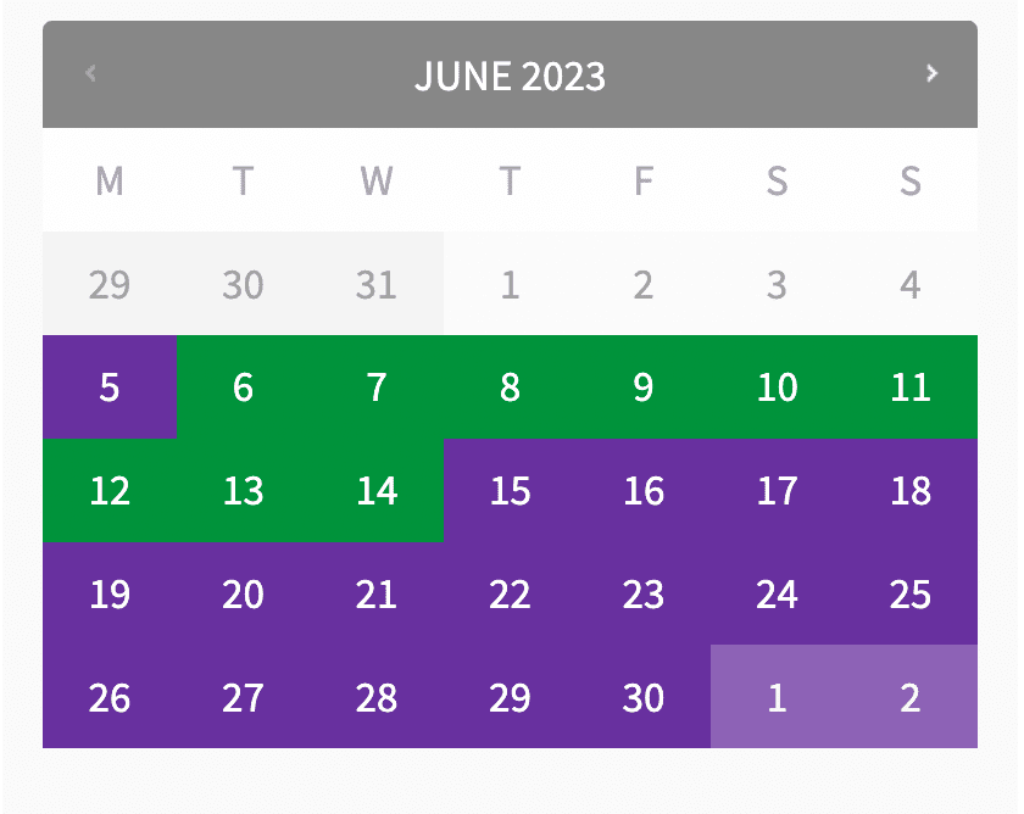
Requiring Confirmation
If there’s a requirement for you to review bookings before confirmation, simply check the “Requires confirmation?” checkbox. This means that instead of processing payment directly during checkout, users input their requirements and submit for approval. This additional step ensures that you can review and confirm the booking before any payment is finalized, adding an extra layer of control and verification to the booking process.
Allowing Booking Cancellation

You have the flexibility to decide whether customers should have the option to cancel their booking. Upon selecting the “Can be cancelled?” option, two fields will appear, enabling you to specify the timeframe within which customers can cancel before the start date. Whether in Minutes, Hours, Days, or Months, this customization empowers you to define the cancellation policy that best aligns with your business model, giving customers a clear understanding of the window within which they can make adjustments to their reservations.
Availability Settings
You can manage the availability of booking slots in the Availability section. The initial options in this tab empower you to define the dates that are open for booking.
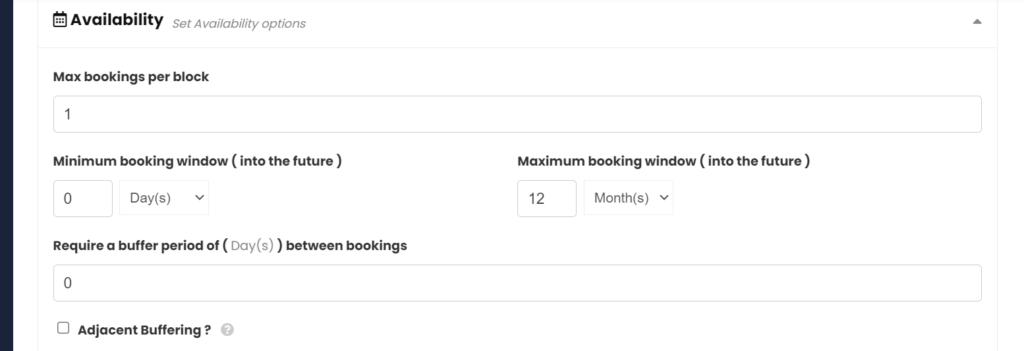
Max Bookings Per Block
This setting grants you the ability to restrict the number of bookings that can be made for a single block of time or time slot.
Specify the maximum number of bookings you wish to permit for a single block of time by entering the desired value in this field. This ensures effective control over the allocation of time slots and prevents overbooking, contributing to a well-managed and organized scheduling system.
A practical example of this setting in action: if you have a fixed booking duration of 1 day and set the maximum bookings per block to 2, it means that each day you can accommodate up to two bookings for that specific time slot.
Minimum/Maximum Block Bookable Into The Future
Control how far in advance customers can book your products with the minimum and maximum block bookable settings.
In the Availability section, enter the number of days or weeks in advance that you want customers to be able to book your products in the Minimum block bookable and Maximum block bookable fields.
For example, if you want customers to be able to book your product at least 3 days in advance, but no more than 2 weeks in advance, enter 3 days and 2 weeks in the respective fields.
Another example: If today is March 1 and you set the minimum block bookable to 1 month into the future, the first date a customer could book would be April 1. The same applies to the maximum date bookable.
Require A Buffer Period Between Bookings

Still in the Availability section, you can set a buffer time after each bookable slot. This prevents anyone else from booking during that time. For example, if you offer 1-hour appointments and want a 1-hour break between each appointment, you would set a buffer time of 1 hour.
To add a buffer before and after each appointment, you can select the “Adjacent Buffering” checkbox. This will add the specified buffer duration to both the beginning and end of each appointment. For example, if you set a buffer of one hour with adjacent buffering, there will be a total of two hours between appointments.
It is important to note that buffer periods must always be defined in the same unit of time as the chosen booking blocks. For example, if you want a 30-minute buffer between your 1-hour appointments, you must use 60-minute booking blocks.
All Dates Are…

This option allows you to choose how you want to set up availability:
- Set available by default: This means that all blocks are available, and you can use rules to specifically turn off certain time slots.
- Not available by default: This means that all blocks are not available, and you must use rules to turn them on.
Check Rules Against
- All blocks being booked: This checks all available blocks within the selected duration. For example, if a customer wants to book for 5 days and each block is equal to 1 day, it will check availability for all 5 days.
- Starting block only: This checks only the first block that the user selects. For example, if a customer wants to book for 5 days and each block is equal to 1 day, it will only check availability for the first day.
Restrict Selectable Days

The “Restrict Selectable Days” setting lets you control which days customers can book appointments or reservations on. By enabling this setting and specifying the allowed days, you can make your bookable time slots available only on certain days of the week.
For example, if you offer weekend activities such as guided tours or workshops, you can enable this setting and only allow customers to book appointments on Saturdays and Sundays.
Custom Availability Range

To set up specific availability rules, you can choose from four types of ranges:
- Months: Set availability for specific months of the year.
- Days of the week: Set availability for specific days of the week.
- Time ranges: Set availability for specific times of the day.
- Specific dates: Set availability for specific dates.
To add a rule, click the “Add Range” button. A new row will be created where you can specify the range type, start and end dates or times, whether the range is bookable, and the priority number.
The from/to values differ based on the range type:
- Date range: from/to will show a datepicker/calendar selection field
- Range of days: from/to will show a dropdown of days of the week (Monday to Sunday)
- Range of months: from/to will show a dropdown of months (January to December)
- Range of weeks: from/to will show a dropdown of weeks (1 to 52)
- Date Range with time: period with a start date/time and an end date/time. Range applies from start time on the start day to end time on the end date.
- Time ranges: from/to will show time inputs. (You can also set it to a specific day of the week from the options available in the dropdown)
- Date Range with recurring time: set based on a custom date range. The range is repeated on each day in the date range.
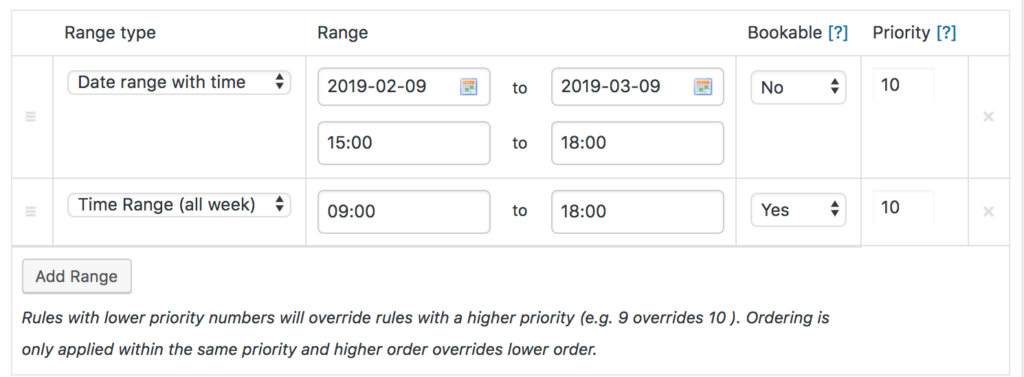
It’s important to note that the time ranges set in the booking system may differ from the actual opening hours of your shop. They specifically denote the hours available for booking. For instance, if your shop is open from 9:00 am to 6:00 pm, and you offer appointments in 1-hour time blocks, the last available booking slot would be at 5:00 pm, not 6:00 pm.
Costs for Bookable Products
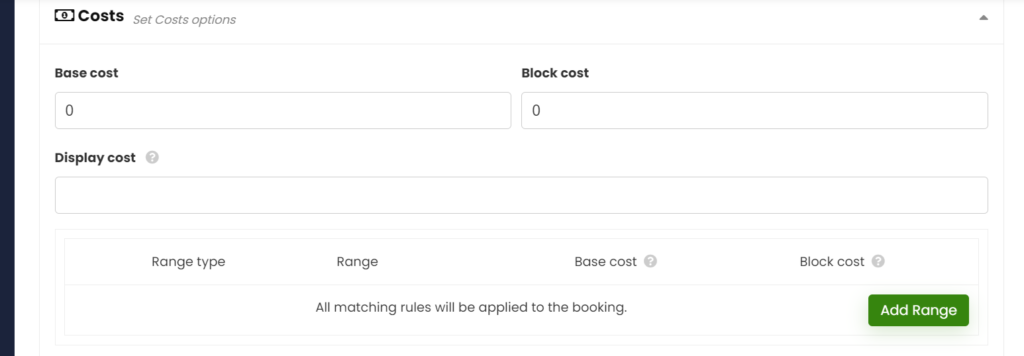
You can set the costs for specific slots in the Costs section. The two main costs you can add are:
- Base cost: This is a fixed cost that is applied to the booking regardless of the customer’s choices on the booking form.
- Block cost: This is the cost per block, as defined in the Booking Duration. If a customer books multiple blocks, the block cost is multiplied by the number of blocks booked.
Display cost: This does not affect the actual cost of the product. It is simply the cost that is displayed to the customer on the front end. Leave this blank to have the display cost calculated automatically. If a booking has varying costs, the lowest available cost is shown, prefixed with the word “From:”.
Custom Cost Range
Below the display cost, there is a section where you can define extra costs. This works in a similar way to Availability. To add an extra cost, click Add Range.
A row appears where you can input the range type, from/to and cost:

The from/to values differ based on the range type:
- Date range: from/to will show a date picker field
- Range of months: from/to will show a dropdown of months (January to December)
- Range of weeks: from/to will show a dropdown of weeks (1 to 52)
- Range of days: from/to will show a dropdown of days of the week (Monday to Sunday)
- Time range: from/to will show time inputs (You can also set it to a specific day of the week from the options available in the dropdown)
- Date range with time: set based on a custom date range
- Persons count: from/to will show the number inputs (Applies only if the “Has Person” option is enabled)
- Block count: from and to will show the number inputs
Extra Options

Persons
If you want to allow customers to book for multiple persons at once, check the “Has Persons” checkbox. Once selected, a new sub-section will open.
Min and Max Persons
You can set a minimum and maximum number of persons for each booking. Similar to duration, the customer can enter a value on the booking form, if enabled.
Multiply All Costs By Person Count
If you enable the “Multiply all costs by person count” option, all costs will be multiplied by the number of people the customer selects.
Count Persons As Bookings
If “Count persons as bookings” is enabled, each person is counted as part of a group booking, with the maximum number of people per group being equal to the “Max bookings per block” set under Availability. For example, if you have a room in your hotel that can accommodate up to 3 people, you can accept a booking with 1 to 3 people at any given time.
Person Type
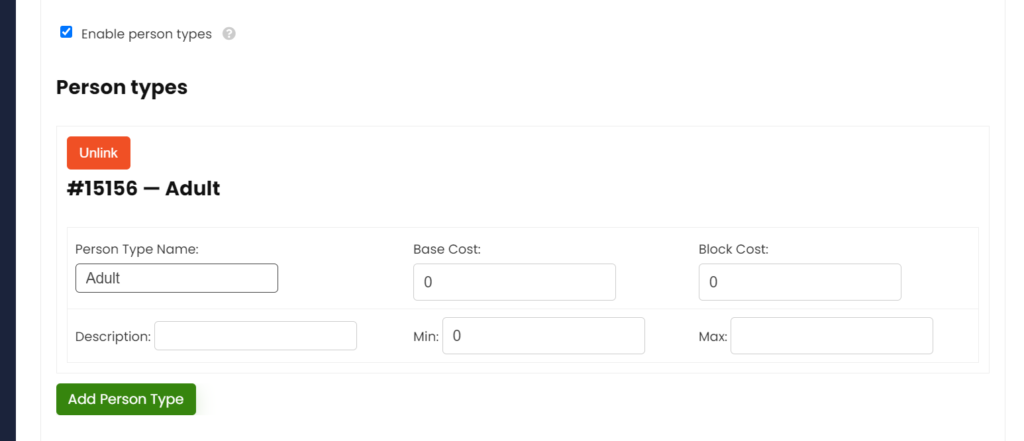
The Person Type setting allows you to create different types of people and set different prices for each type. This is useful for charging different prices depending on the person type. For example, you might want to charge a higher price for adults than for children.
To set up different person types, in the Persons sub-section, check the Enable Person Type checkbox. Once you do this, you can add multiple person types.
For each person type, enter a name, cost, and description (optional). You can also set a minimum and maximum number of people for each type. For example, you could require at least one adult for each booking while making children optional (minimum 0). If you leave Max blank, there are no other restrictions than those of the bookable product itself.
Resources
Resources are anything you need to provide your bookable products or services, such as rooms, equipment, staff members, or other tangible or intangible assets. By setting up resources, you can effectively allocate and manage their availability and capacity relative to your bookable products or services. Each resource can have unique characteristics, an availability schedule, and capacity limitations, and it can be shared between multiple bookable products.
Examples:
- A yoga studio might create a “Yoga Mat” resource and assign it to yoga classes. The studio could set the price of the yoga mat resource to $2 and the availability to be limited to 10 bookings per day.
- A restaurant might create a “Highchair” resource and assign it to table reservations. The restaurant could set the price of the highchair resource to $5 and the availability to be limited to 2 bookings per table.
To enable resources, check the Has resources checkbox.

Resources are…

There are two types of bookable resources:
- Customer selected: Customers can select a resource from a dropdown list on the booking form.
- Automatically assigned: Resources are automatically assigned to bookings based on availability.
Examples:
- Customer selected: A hotel might allow customers to select a room type (e.g., single or twin) on the booking form.
- Automatically assigned: A hair salon might automatically assign a stylist to each booking.
Once you have enabled resources, you must choose a type. If you choose “Customer selected”, you must also give the resource a label. This is what will be displayed on the booking form.
Resources can be used globally across multiple products. However, only one resource can be assigned per booking, even if a bookable product has multiple resources associated with it.


